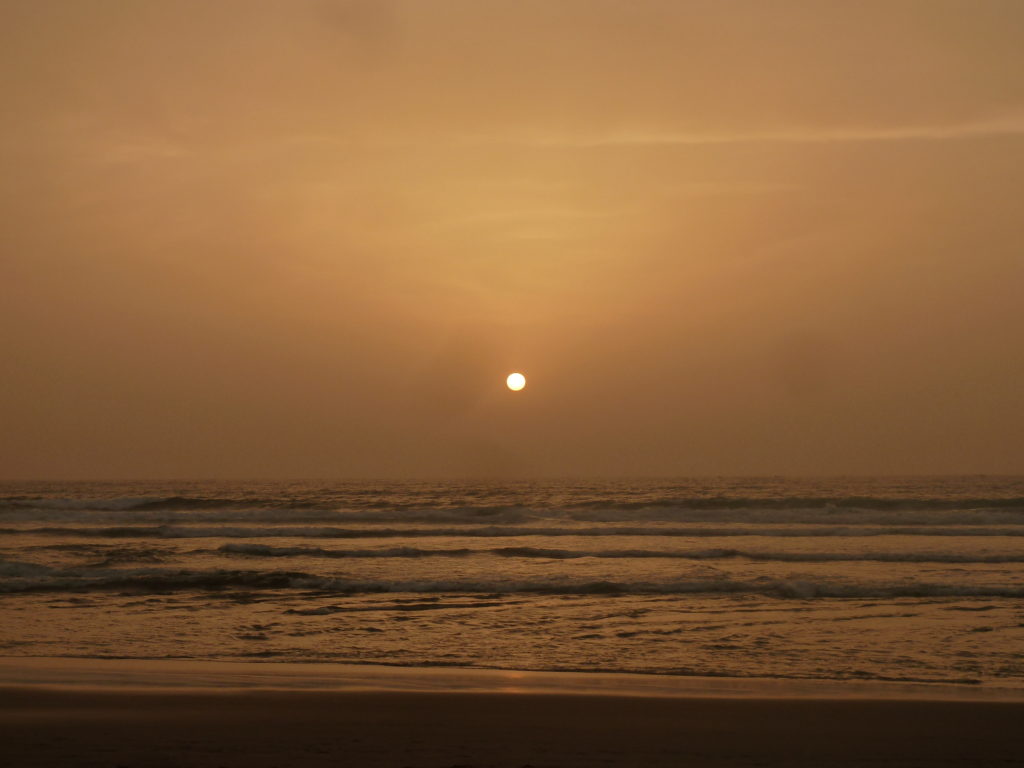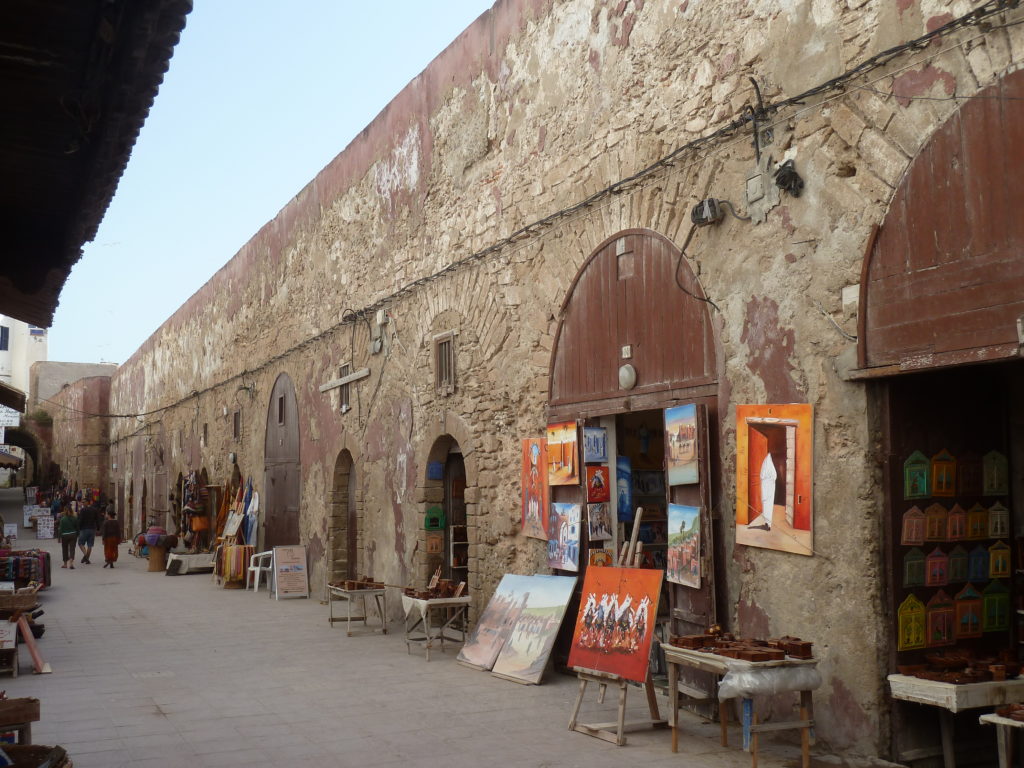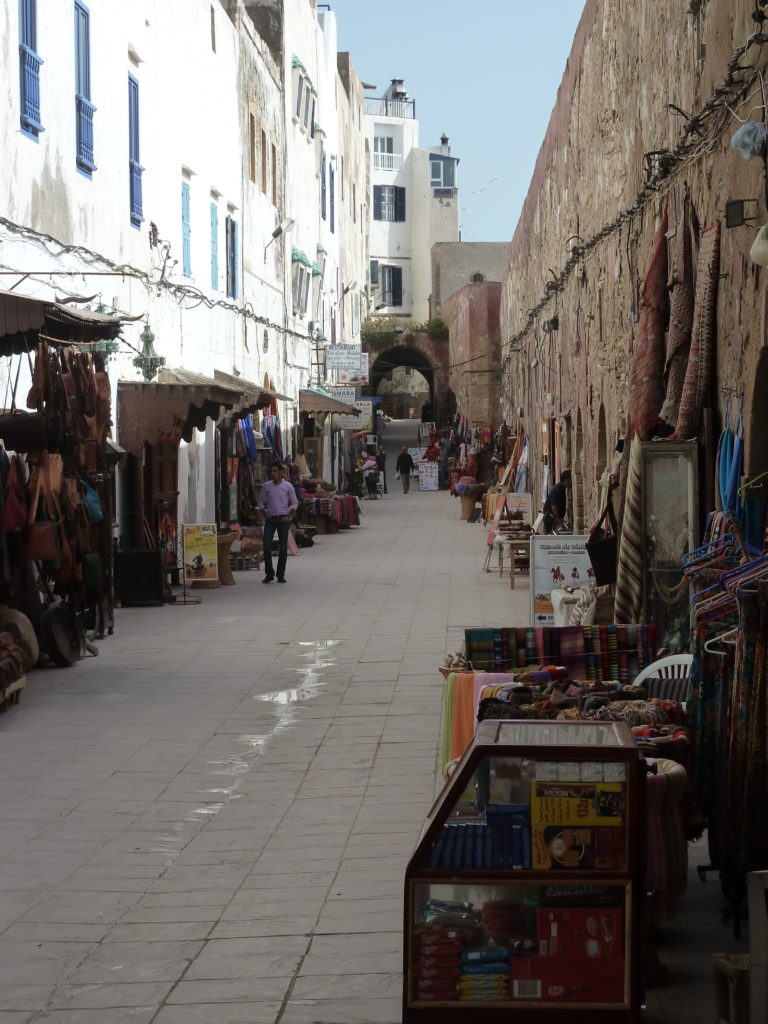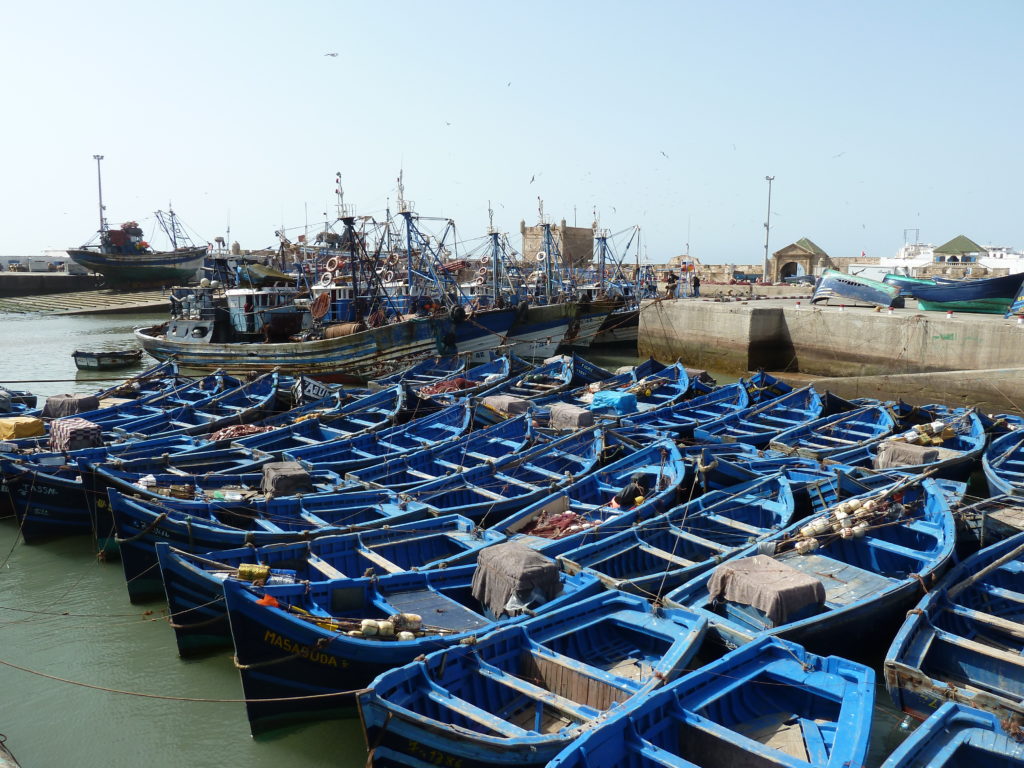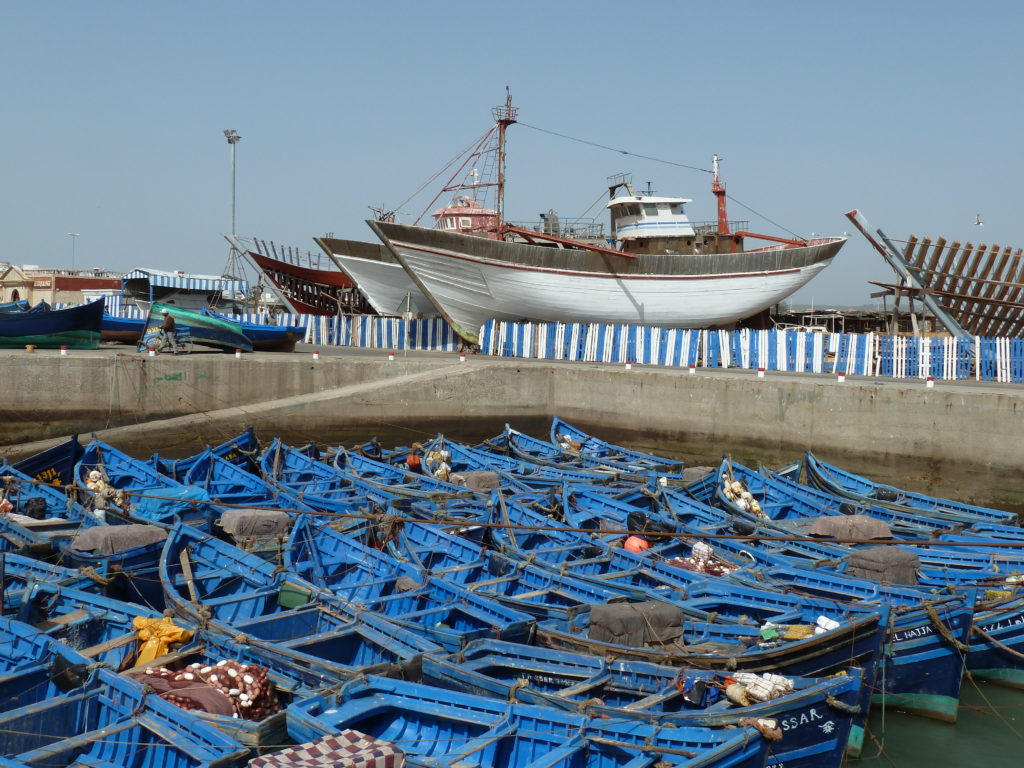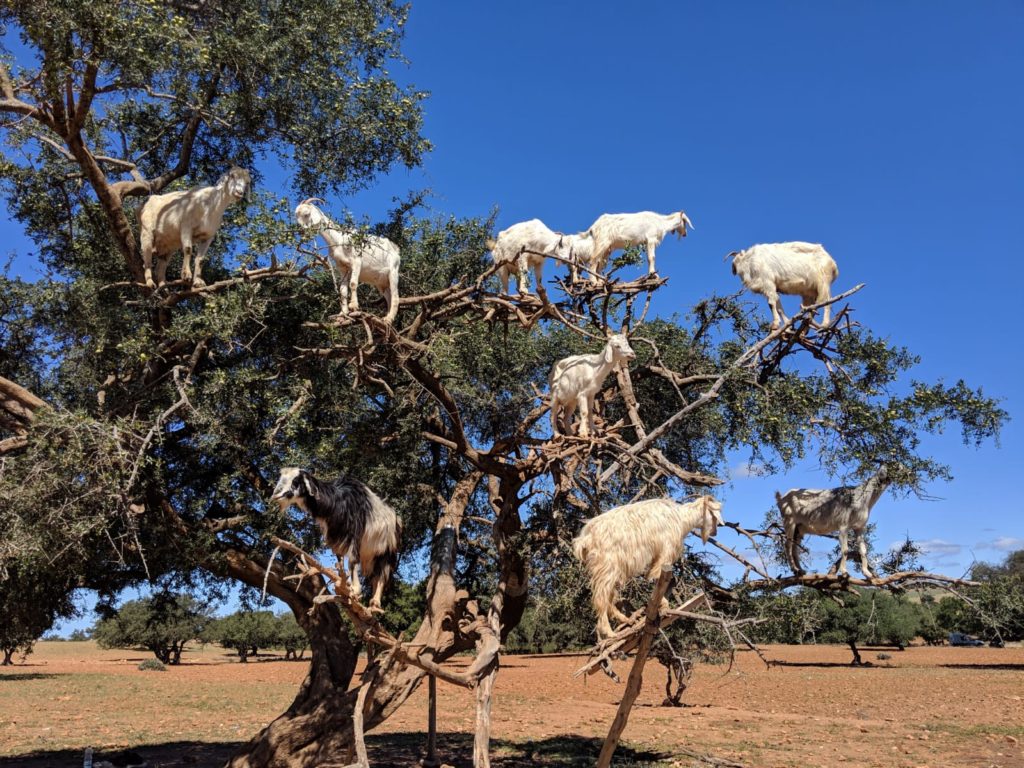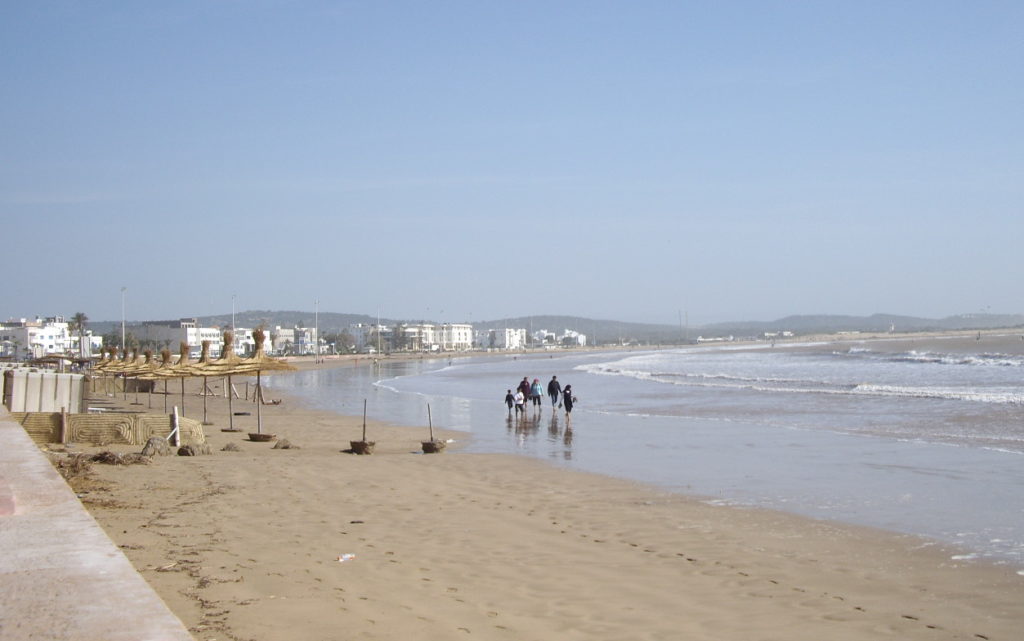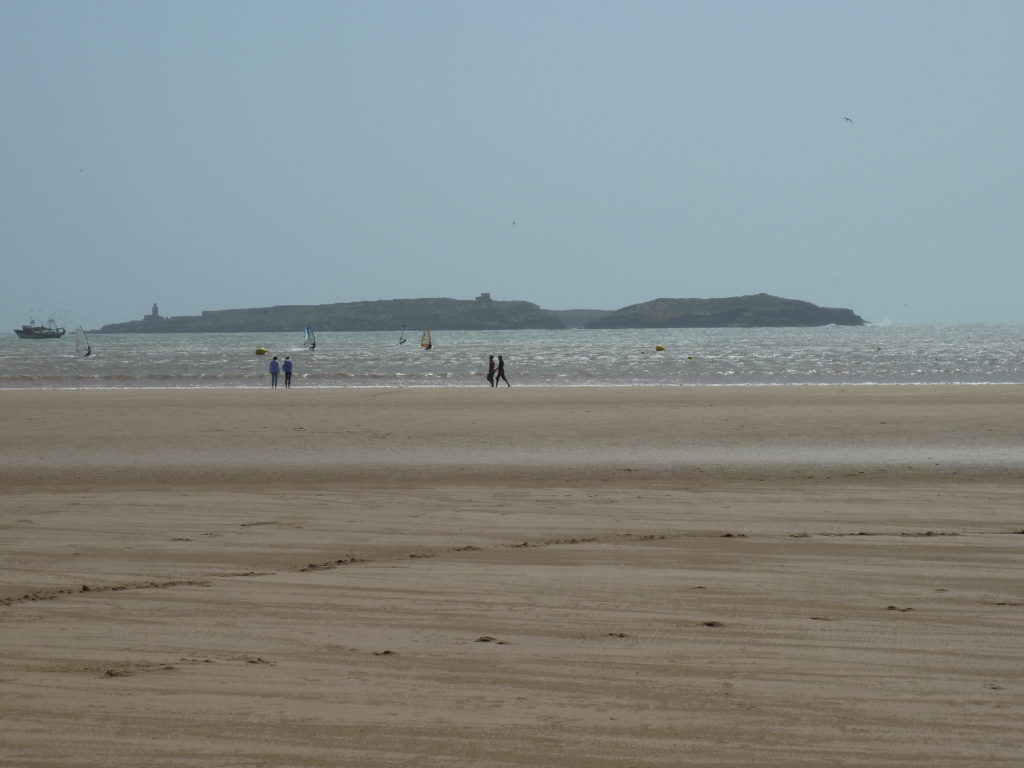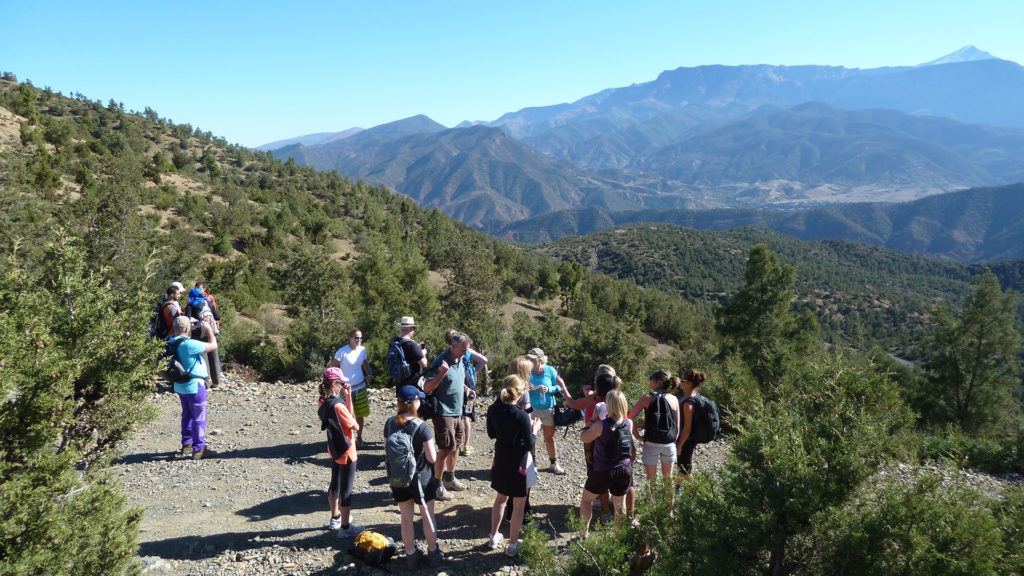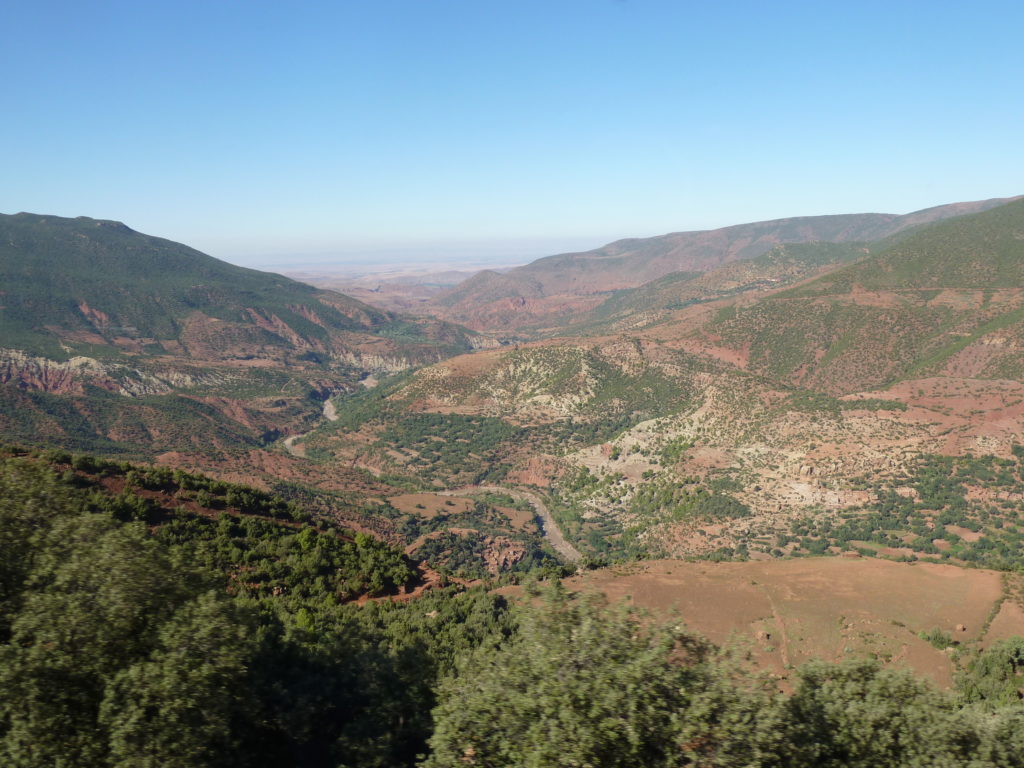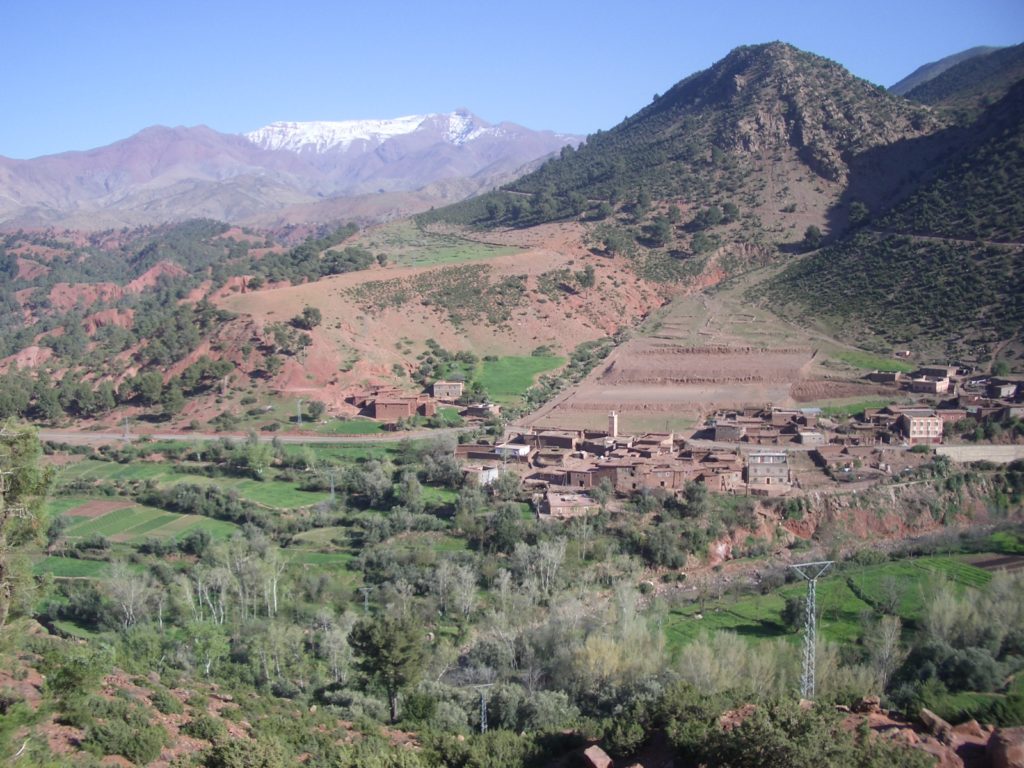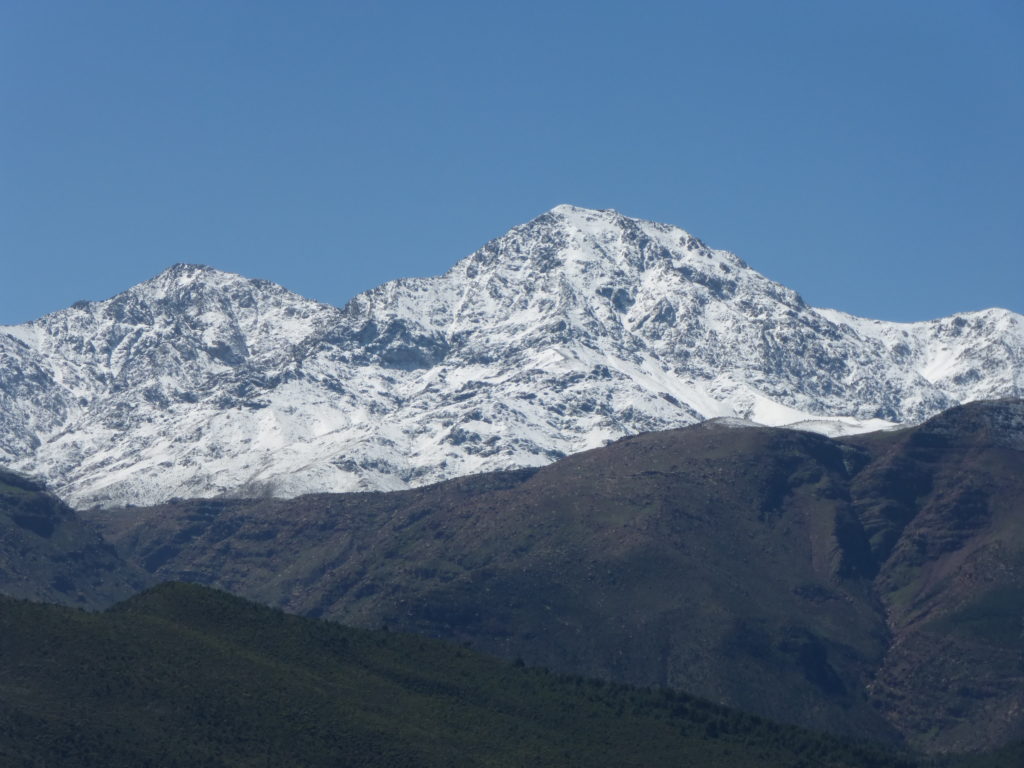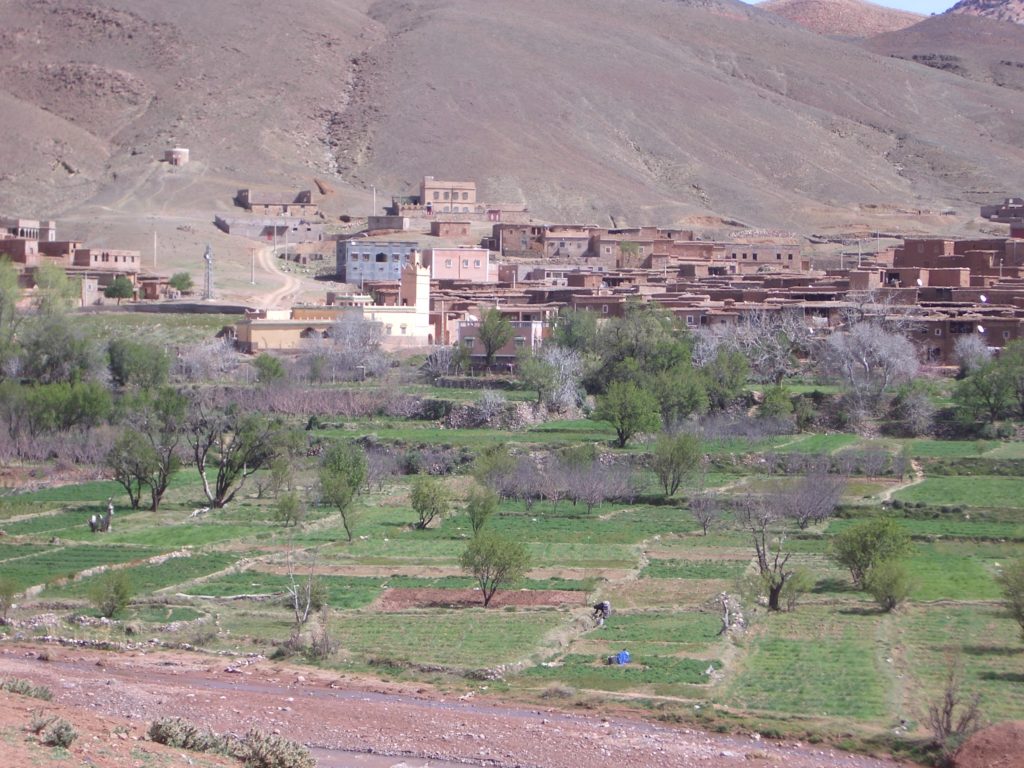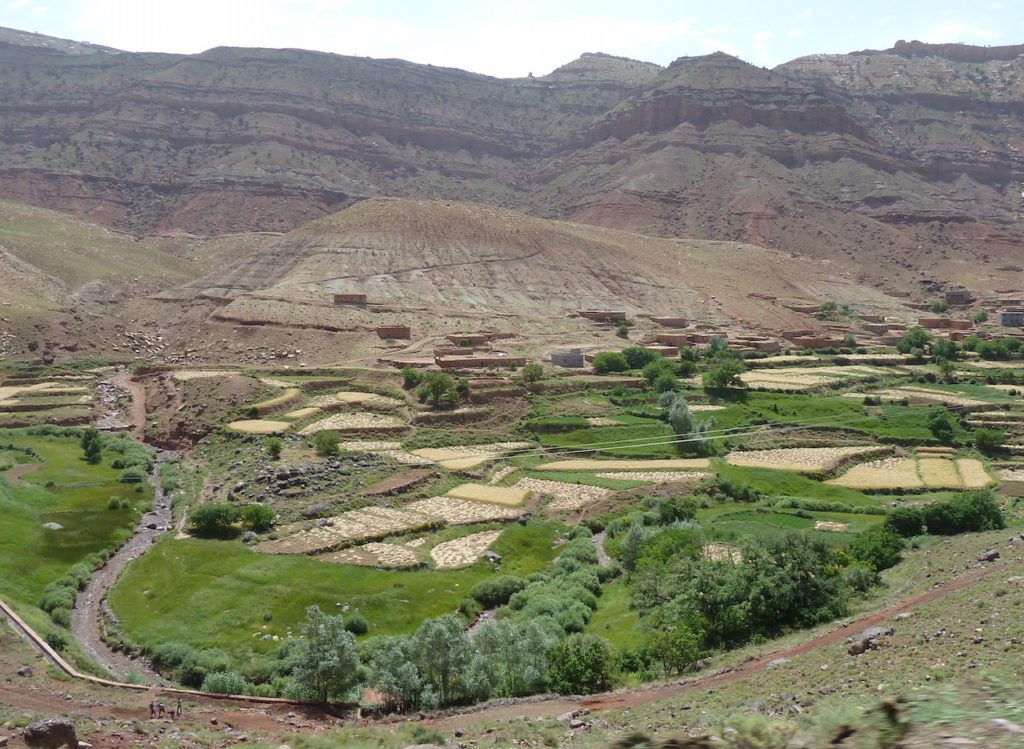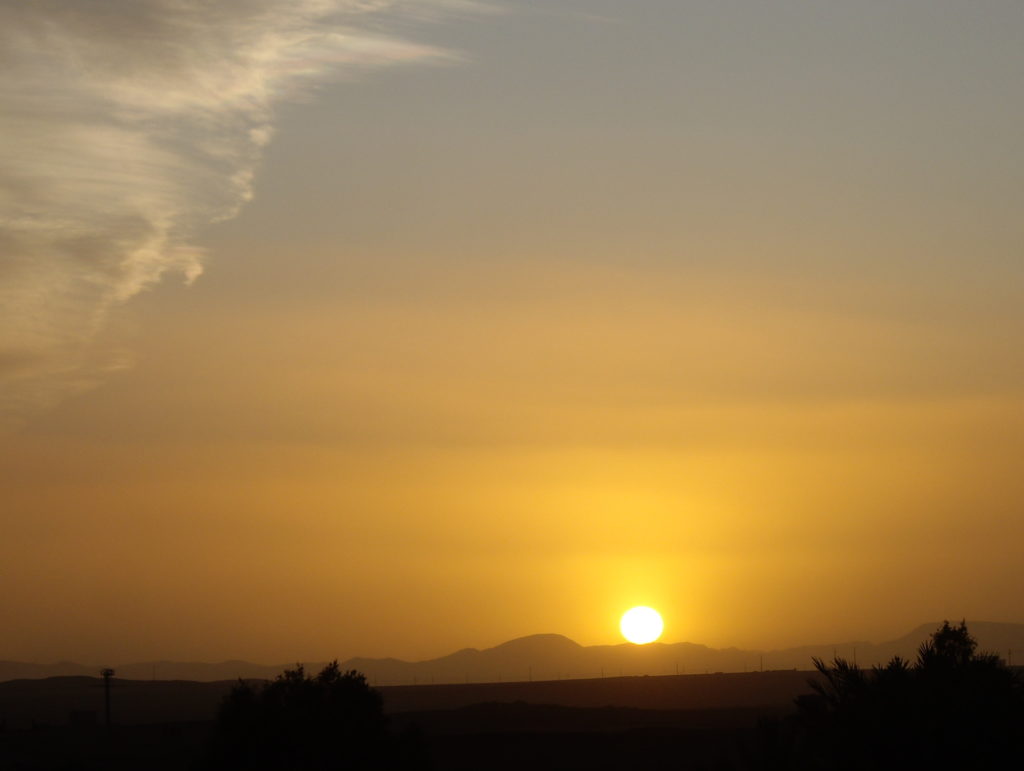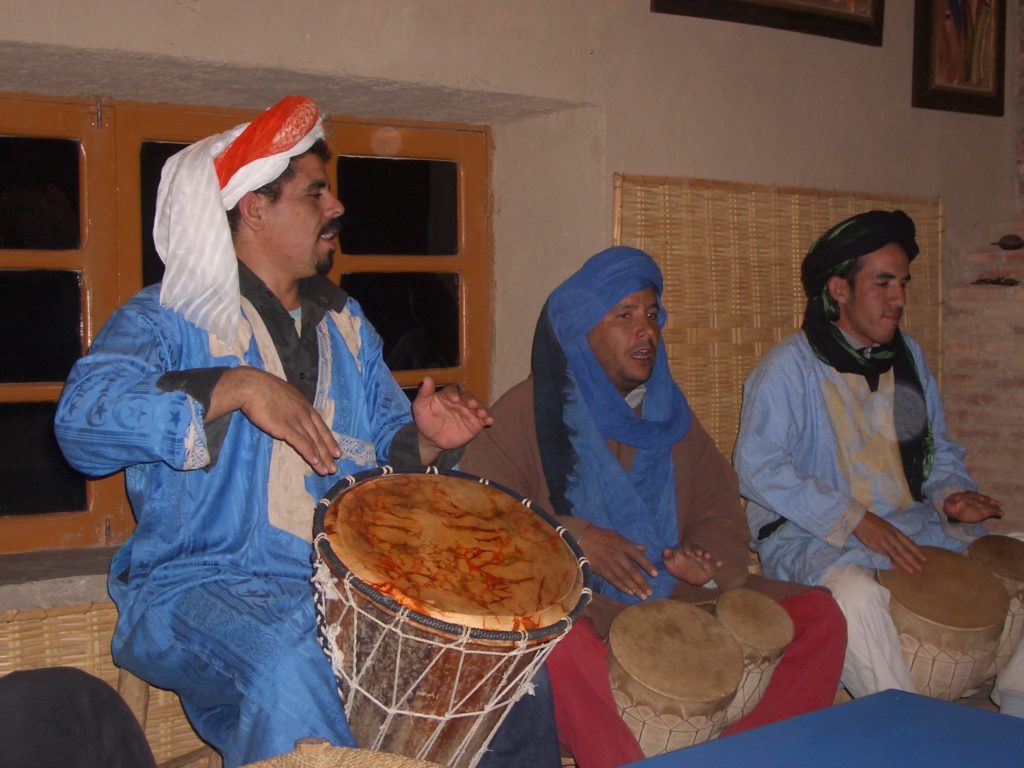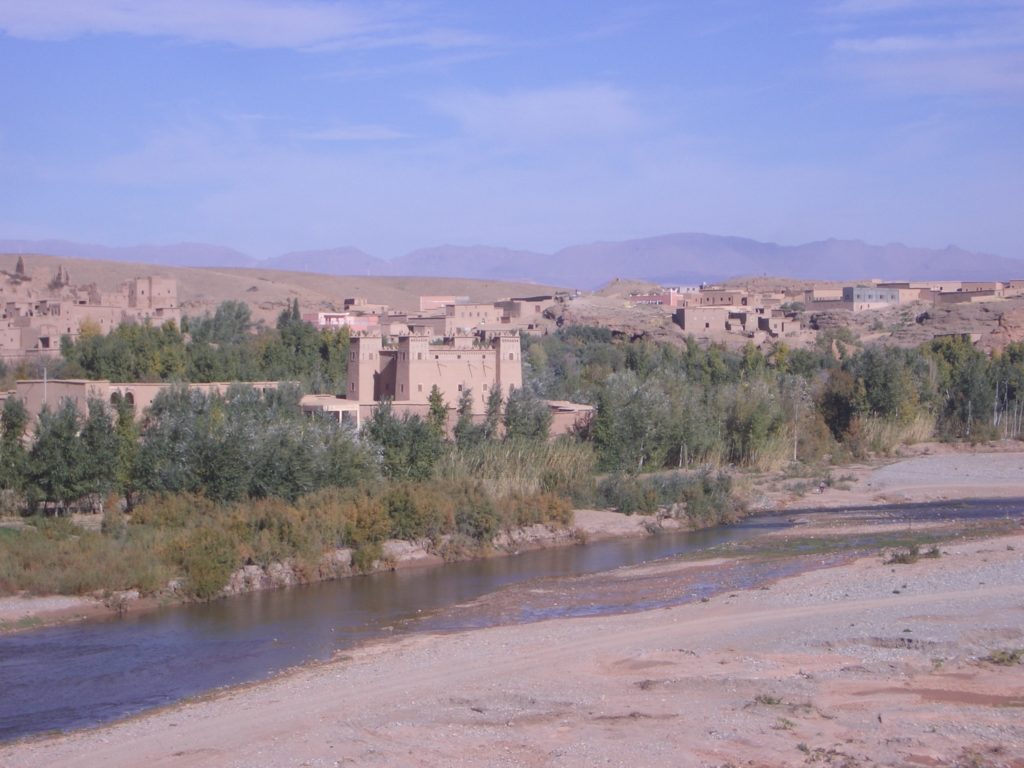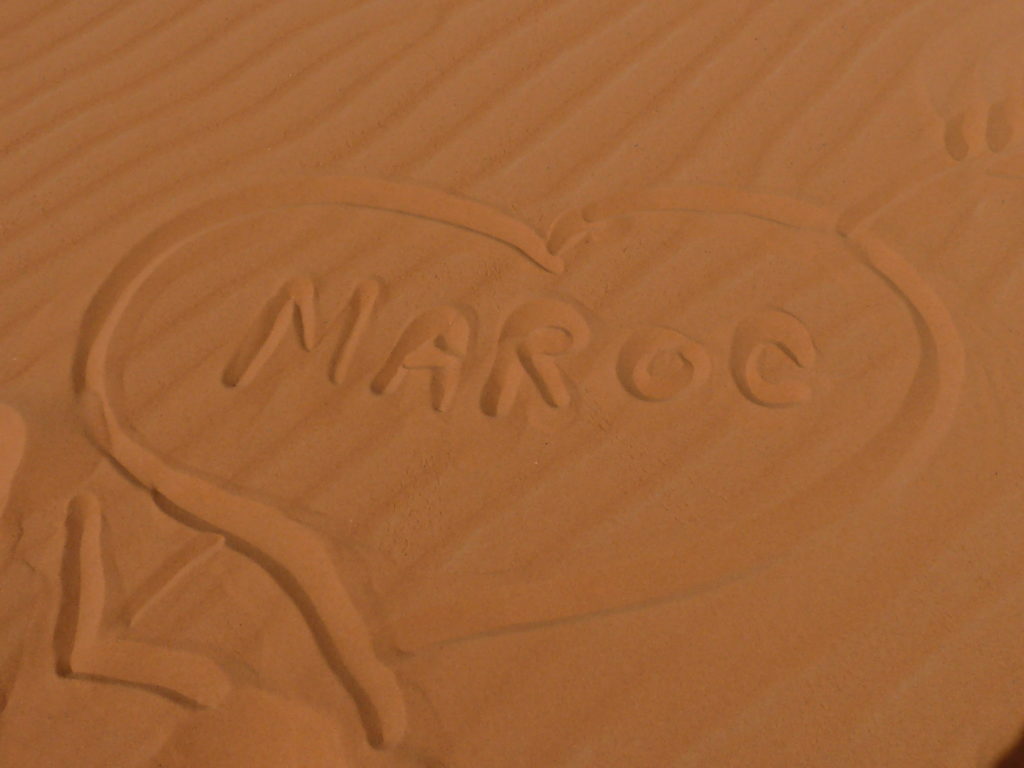EDUCATIONAL TOPICS: Arid Landscapes and Landforms; Semi Desert and Desert Transition; Sand Dunes and their Management; Artesian Water; Climate Change; Different Cultures; Star Gazing
The ever-increasing aridity and parched landscapes are entered on travelling towards the Sahara. Passing through many small towns (e.g. Tinejad, Melaah) often a market day can be encountered; lively, bustling and colourful.
Erfoud is where your group’s travels turn southwards. In Erfoud, “fossil capital” of this area, there is the opportunity to visit a craft workshop where the fossil rich rocks are skilfully changed into objects, some practical (e.g. tables) and some decorative (e.g. plates and bowls).
On then to Rissani, a bustling market town, and then to Merzouga. By now the massive sand sea of Erg Chebbi will be looming on the forward horizon. Here the sand dunes rise to over 200m, covering a 35 square kilometre area – a classic Sahara scene.
Having settled in to your accommodation, there is the chance to take a camel ride into the sand dunes, to climb to a high vantage point and to watch the sun slowly set; a magical moment.
NOTE: An option in Merzouga/Erg Chebbi is to combine your camel trek with an overnight in the desert in the Erg Chebbi in a Bedouin Camp (rather than in an hotel); this can be discussed.
No matter where you are staying, hotel or camp, there is sure to be some traditional music after you evening meal. Pounding drum rythms and singing complete the Saharan atmosphere. Prepare to join in (and to perhaps even offer some entertainment from your pupils/students).
As well as the opportunity to view a magnificent sunset (and indeed, later, a stunning array of stars), if there are any early risers in your group (including teachers!) then a Saharan sunrise can be just as thrilling as a Saharan sunset.
Overnight Merzouga

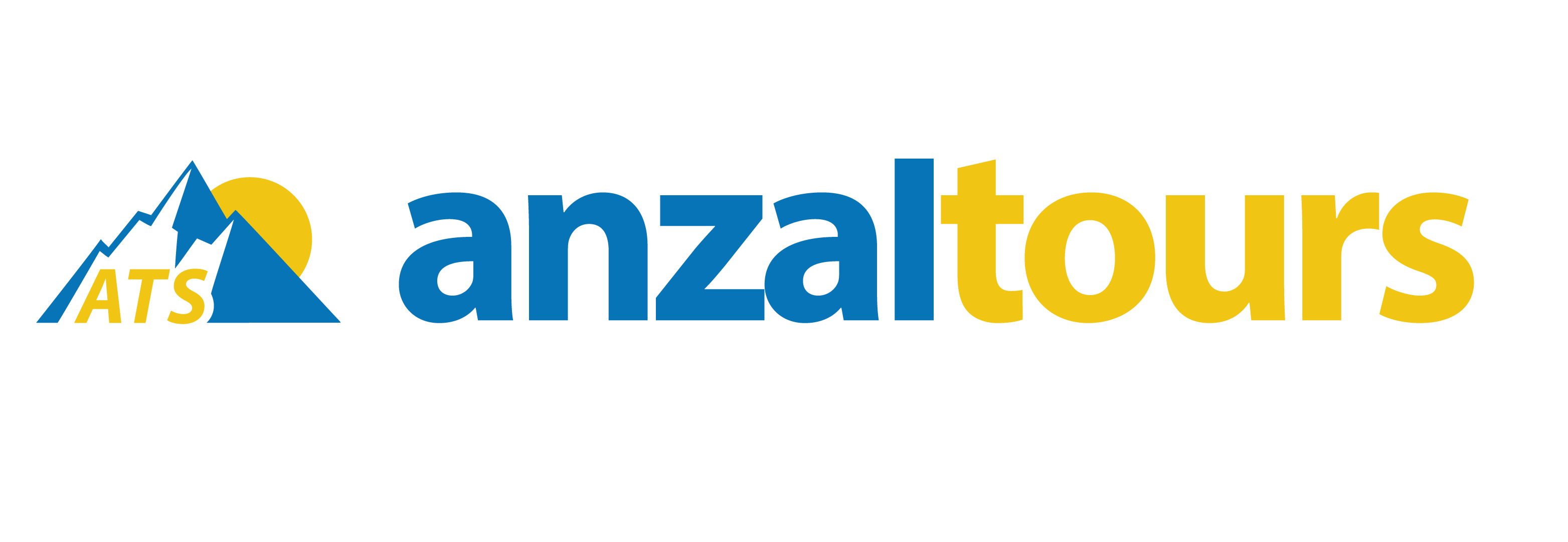
![[GetPaidStock.com]-6611d8248b79b](https://new.anzaltours.com/wp-content/uploads/2024/04/GetPaidStock.com-6611d8248b79b-1024x656.jpg)
